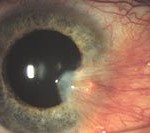Usually I am preaching the dangers of Ultraviolet (UV) exposure, and I will do a bit of that, but there are some benefits to sunshine. 
Vitamin D – Vitamin D is a fat soluble vitamin that is naturally present in very few foods. It is produced endogenously when ultraviolet rays from the sun strike the skin and trigger vitamin D synthesis. It is essential for maintaining bone health. Vitamin D promotes the absorption of calcium in the gut to enable normal bone growth and maintenance. It may also protect against the development of cancer, autoimmunity, rheumatoid arthritis, hypertension, multiple sclerosis, type I and II diabetes and infectious disease. Although vitamin D can be obtained through vitamin supplementation, most people in the world derive their vitamin D from sun exposure.
Low vitamin D levels may increase the chance of developing age-related macular degeneration (AMD), a minimum exposure to UV light may be necessary for the production of vitamin D. (this does not mean it is OK to stare at the sun). UV exposure should be moderate; too much and the risk for AMD increases, as does the risk with too little UV.
 There are acute effects on the eyes from too much sun exposure such as photokeratitis (a sunburn on the surface of the eye). Long-term UV exposure can cause cataracts and pterygium (a growth on the white of the eye). Wearing sunglasses when outdoors is a simple way to prevent over-exposure of UV light to the eyes.
There are acute effects on the eyes from too much sun exposure such as photokeratitis (a sunburn on the surface of the eye). Long-term UV exposure can cause cataracts and pterygium (a growth on the white of the eye). Wearing sunglasses when outdoors is a simple way to prevent over-exposure of UV light to the eyes.
The amount of protection from sunglasses varies depending on the material of the lens and added coatings. For maximum protection look for lenses that block 90% of UVA and 99% of UVB.
Currently, the UV index can be used as a rough guide for knowing when the skin and eyes need protection. Sunscreens with a sun protection factor (SPF) of 8 or more appear to block vitamin D producing UV rays. Because we typically do not apply sufficient amounts of sunscreen or cover all exposed skin, synthesis of vitamin D probably occurs. The maximum amount of exposure needed to maintain normal vitamin D levels is 30 minutes twice a week. For some people 5 minutes twice a week is adequate. Again moderation, more is not better.
